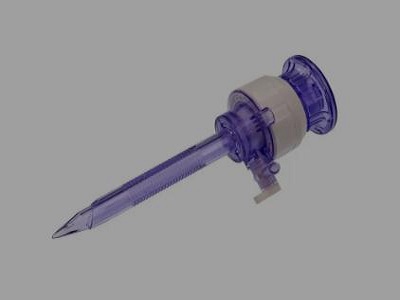Indications of thoracic puncture
In order to clarify the nature of pleural effusion, pleural puncture and aspiration examination should be performed to help diagnosis; When there is a large amount of fluid or gas accumulation resulting in lung compression symptoms, and the pyothorax patients need to pump fluid for treatment; Drugs must be injected into the chest cavity.
Contraindications of thoracic puncture
(1) The puncture site has inflammation, tumor and trauma.
(2) There is a tendency of severe bleeding, spontaneous pneumothorax, large blood clots, severe pulmonary tuberculosis, emphysema, etc.
Precautions for Thoracic Puncture
(1) Patients with coagulation defects, bleeding diseases and those taking anticoagulant drugs should be treated accordingly before the operation.
(2) Thoracic puncture should be fully anesthetized to prevent pleural shock.
(3) The puncture should be carried out close to the upper edge of the rib to avoid injury to intercostal blood vessels and nerves. The needle, latex tube or three-way switch, needle cylinder, etc. shall be kept closed to prevent air from entering the chest and causing pneumothorax.
(4) Puncture should be careful, the technique should be skilled, and disinfection should be strict to avoid causing new infection, pneumothorax, hemothorax or accidental injury to blood vessels, heart, liver and spleen.
(5) Cough should be avoided during puncture. Observe the patient's changes at any time. In case of pale face, sweating, dizziness, palpitation and weak pulse, the puncture shall be stopped immediately. Let the patient lie flat, inhale oxygen when necessary, and inject adrenaline or sodium benzoate and caffeine subcutaneously. In addition, corresponding treatment shall be made according to the condition.

(6) The fluid must be pumped slowly. If a large amount of fluid must be pumped due to treatment, the three-way switch should be connected behind the puncture needle. The fluid should not be drained too much for treatment. If necessary, it can be pumped in several times. The amount of liquid pumped for the first time shall not exceed 600ml, and the amount of liquid pumped for each time thereafter shall generally be about 1000ml.
(7) If bleeding liquid is drawn out, stop drawing immediately.
(8) When it is necessary to inject medicine into the chest cavity, connect the prepared syringe containing the medicine liquid after pumping, mix a little of the chest liquid with the medicine liquid, and inject again to ensure that it is injected into the chest cavity
How to select the thoracic puncture positioning point?
(1) Thoracic puncture and drainage: the first step is to perform percussion on the chest, and select the part with obvious solid sound for puncture, which can be located in combination with X-ray and B-ultrasound. The puncture point can be marked on the skin with nail violet, and it is often selected as follows: 7~9 intercostal lines of the subscapular angle; 7-8 intercostals of posterior axillary line; 6~7 intercostals of midaxillary line; The axillary front is 5-6 ribs.
(2) Encapsulated pleural effusion: puncture can be performed in combination with X-ray and ultrasonic localization.
(3) Pneumothorax decompression: the second intercostal space in the midclavicular line or the 4-5 intercostal space in the midaxillary line of the affected side is generally selected. Because intercostal nerves and arteries and veins run along the lower edge of the rib, they should be punctured through the upper edge of the rib to avoid damaging nerves and blood vessels.
The whole process of thoracic puncture
1. Instruct the patient to take the seat facing the back of the chair, place both forearms on the back of the chair, and lean the forehead on the forearms. Those who can not get up can take a half sitting position, and the affected forearm is raised on the pillow.
2. The puncture point shall be selected at the most obvious part of the chest percussion sound. When there is much pleural fluid, the scapular line or the 7th~8th intercostal space of the posterior axillary line is usually taken; Sometimes the 6th to 7th intercostal space of the midaxillary line or the 5th intercostal space of the front axillary line are also selected as the puncture points. Encapsulated effusion can be determined by X-ray or ultrasonic examination. The puncture point is marked on the skin with a cotton swab dipped in methyl violet (gentian violet).
3. Regularly disinfect the skin, wear sterile gloves, and cover the disinfection hole towel.
4. Use 2% lidocaine to perform local infiltration anesthesia from the skin to the pleural wall at the puncture point on the upper edge of the lower rib.
5. The operator fixes the skin of the puncture site with the index finger of the left hand and the middle finger, turns the three-way cock of the puncture needle to the place where the chest is closed with the right hand, and then slowly pierces the puncture needle into the anesthesia place. When the resistance of the needle tip suddenly disappears, turn the three-way cock to make it connect with the chest for fluid extraction. The assistant uses hemostatic forceps to help fix the puncture needle to prevent the lung tissue from being damaged by penetrating too deeply. After the syringe is full, turn the three-way valve to connect it with the outside world and discharge the liquid.
6. At the end of fluid extraction, pull out the puncture needle, cover it with sterile gauze, press it with a little force for a moment, fix it with adhesive tape and ask the patient to lie still.
Post time: Oct-20-2022





